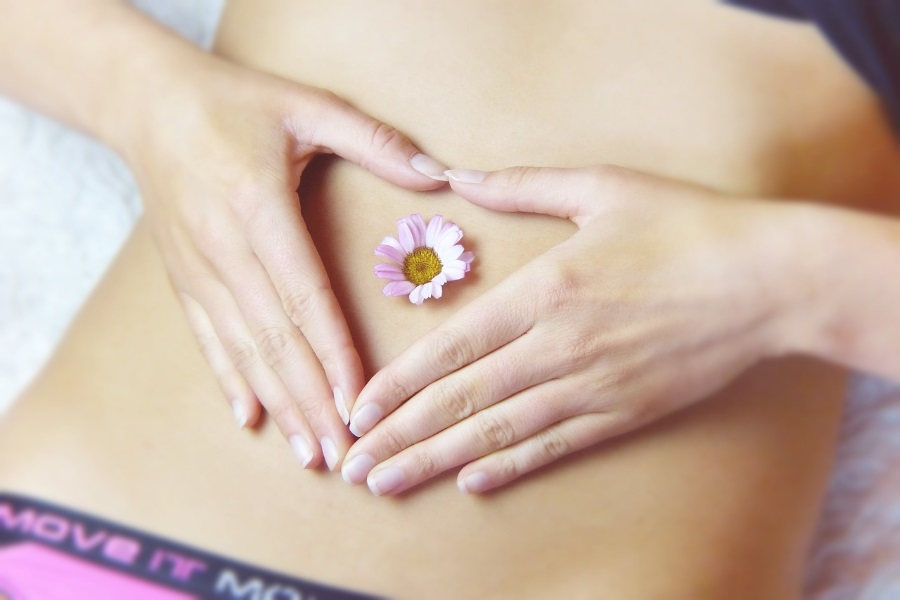How Following a Low FODMAP Diet could Reduce Bloating
Do you ever feel bloated, especially after eating a meal? Your stomach grows to the size of a balloon, it’s uncomfortable and makes you look fat.
This was my experience for years…Until I found out about FODMAP.

In this post you’ll learn:
- What FODMAP is
- The 3 most potent FODMAP foods
- The 3 food 3 day exclusion trial
- Living on low FODMAP
- FODMAP coping strategies
Before we tuck in…
I’d like to give you a little background about my history with bloating and how FODMAP changed my life in a big way.
In 2007 I was diagnosed with Ulcerative Colitis (UC). UC is an Inflammatory Bowl Disease (IBD) where the body attacks itself. The immune system, for some unknown, reason thinks that parts of the lining of the large intestine are foreign invaders and tries to kill them.
This results in the tissue being broken down, leading to bleeding, pain and ulcers. Not pleasant I can tell you.
UC has no known cause or cure. The only treatment available is medication. For some, it appears to be related to the foods they eat and stress levels.
Why is this related to FODMAP?
Around the same time, I started suffering from bloating issues. My stomach would balloon in size after eating meals. And we all know what bloating means. More gas.
As the years went on it seemed to get worse. Every time I ate something my stomach would balloon. I felt stuffed and uncomfortable 90% of the time.
The only respite was overnight. In the mornings I would notice that my stomach would often be a lot flatter.
I just assumed that I couldn’t do anything about it and that I would have to live with it. No doctor or specialist that I saw ever mentioned FODMAP to me.
I was taking my prescribed medication and that was not helping at all.
FODMAP: The big discovery…
It wasn’t until I had a DNA Fit test done that I first heard about FODMAP. I was completing the DNA Fit Personal Trainer accreditation course so that I was able to offer this service to my clients.
I’m a Personal Trainer and thought it would benefit a lot of people to understand more about their DNA and how that impacts their food and training habits.
Anyway, during this course they were speaking about gluten and coeliac disease. And how many people who thought they were allergic or intolerant to gluten were not, but were in fact having a reaction to high FODMAP foods.
What is FODMAP?
FODMAP stands for Fermentable Oligo-saccharides, Di-saccharides, Mono-saccharides and Polys.
In simple terms this means some foods which the body cannot digest and move through the digestive system undigested.
These undigested foods make their way to the large intestine where healthy, normal bacteria feed off them and produce hydrogen gas which causes bloating.
Food is not supposed to reach the large intestine undigested. The bacteria will feed off anything that come their way, which is totally normal.
The problem is the undigested food getting that far, not the bacteria feeding off it. This is their normal job, which when fed the right foods has lot of health benefits for our gut.
Where to start with a low FODMAP diet: The 3 day 3 food exclusion trial
When I first found out about FODMAP, I had no idea where to start. I was curious and looked online for some information. I found lots of information and books, especially ones which discussed a full-on FODMAP diet.
There were also lots of warnings that the FODMAP diet can be very restrictive and to only do it with the help of a dietitian.
I wasn’t even sure if it was FODMAP that was the cause, so I wanted a way to trial it out.
I found that the three biggest FODMAP foods are:
- Onion
- Wheat
- Garlic
So I decided that I would remove those three foods from my diet for 1 week. I recommend getting advice before making any substantial changes to your diet, but I decided that removing just thesethree items for 1 week would not be a problem.
The results of the test…
After 3 days of no wheat, onion or garlic I could not believe the changes. My stomach was so much flatter, I had almost no bloating and felt 100% better. It was genuinely a life changing experience.
Bloating and FODMAP
There is a massive list of foods which are high FODMAPs. It all depends on the make-up of the food.
I use a very helpful app called Monash University FODMAP diet, which uses a traffic light system to tell you if a food is high, medium or low fodmap.
Some foods, such as avocado, can be eaten in small amounts. 1/8 of an avocado is considered low FODMAP, but any more pushes a polyol called sorbitol level too high which may cause issues for those who do not absorb it well.
Living with low FODMAP
Since I found out that low FODMAP really helps me, I now eat around a low-ish FODMAP diet. I’ve never been to see a dietician and feel confident enough that I eat a healthy range of fruit, vegetables, nuts and seeds to get everything I need from my diet.
I also have regular blood tests because of my Ulcerative Colitis so if anything starts to be out of balance it will be picked up on one of those.
In general, here are the foods that I avoid 90% of the time:
- onion
- wheat
- garlic
- milk
- beans
- bread
- bananas
- sweetcorn
- avocado
I say 90% of the time because I’m not too strict. If I’m out at a restaurant I will have those foods, I just generally tend to avoid them when I’m cooking for myself at home.
Although I also sometimes have them at home, such as when I crave some fresh bread. In this situation I make sure I buy the best quality one I can.
FODMAP Coping Strategies
- If I want to have bread I go for a gluten free option because that does not contain wheat. The same applies for pasta. If in doubt, go for the gluten free option of everything you can.
- Onion and garlic are totally off the menu wherever possible as they cause a big reaction for me. It can be challenging to find pre-made foods without these in because they add so much flavour. This is just another reason to cook for yourself.
- I use a garlic supplement, Allicin Max which contains just the active ingredient (allicin) from garlic to help top up on the good stuff and this doesn’t seem to cause any adverse reactions.
- I take a calcium supplement because I don’t drink milk, but I also eat a lot of seeds, spinach, salmon and almonds so that should make up for it.
Note: I am not a doctor or dietitian, so please do not try any drastic changes to your diet without first speaking to a suitably qualified person about it. The information I have provided here is just my experience and may not apply to other people.


